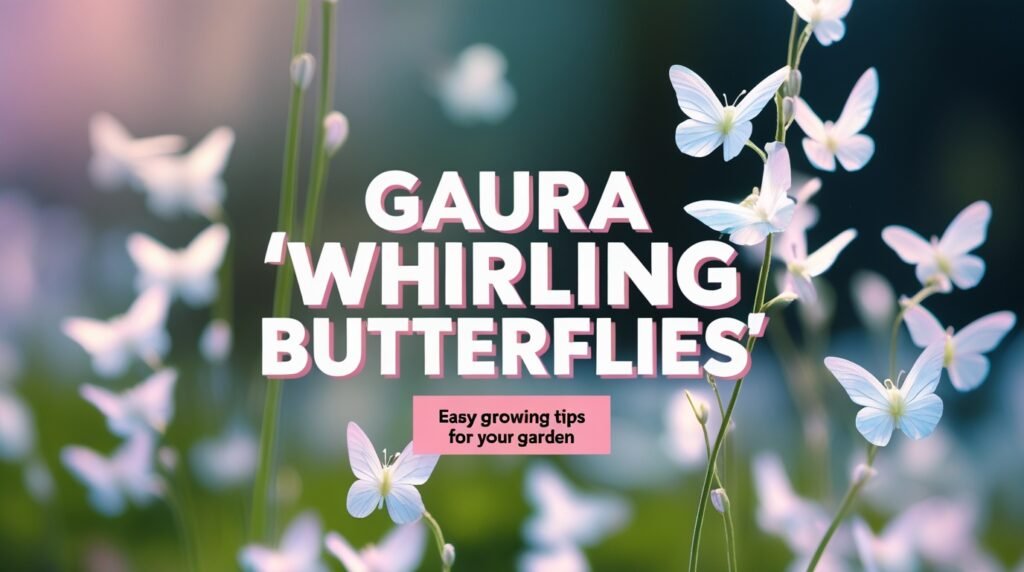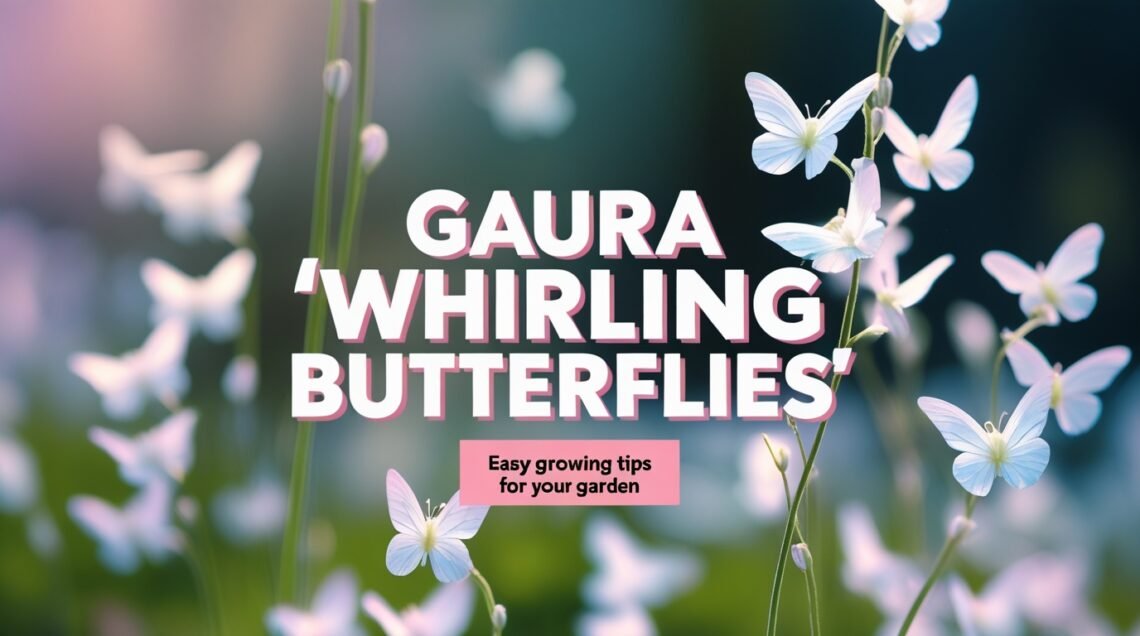Discover how to grow Gaura lindheimeri ‘Whirling Butterflies’ with simple care tips from Ashley Scott, a 10-year gardening pro. Perfect for USA gardens!

Hey there, plant lovers! I’m Ashley Scott, a gardening enthusiast with 10 years of experience growing airy perennials in my USA backyard. One of my favorite additions is Gaura lindheimeri ‘Whirling Butterflies’ (now known as Oenothera lindheimeri ‘Whirling Butterflies’), a native North American wildflower that dances in the breeze like fluttering butterflies. With its slender green stems, lance-shaped leaves, and delicate white-to-pink four-petaled flowers blooming from early summer to fall, it’s perfect for borders, rock gardens, or containers. Native to Texas, Louisiana, and Mexico, this perennial brings movement and pollinator appeal to any space. Below are simple care tips, my personal stories, and ties to projects like DIY compost bins or pollinator-friendly plants at USA Garden Hub. Let’s get whirling!
Why Grow Gaura ‘Whirling Butterflies’?
Gaura ‘Whirling Butterflies’ is a must-have for USA gardeners due to its long bloom time (June to frost), drought tolerance, and low-maintenance charm. It grows 2-3 feet tall and wide, thriving in USDA Zones 5-9, and its wand-like stems sway gently, adding airy texture to sunny spots. This plant attracts butterflies, hummingbirds, and bees, fitting perfectly with my 8 blooming plants that bees love. Symbolizing grace and freedom, it’s ideal for cottage gardens or naturalistic plantings, much like my Nerine flowers or Dalmatian Bellflower.
Care Tips for Gaura ‘Whirling Butterflies’
Here’s how to keep your Gaura thriving, based on my own garden successes and lessons learned.
Light
Gaura loves full sun with at least 6 hours of direct light daily for the best flowering and structure. It tolerates partial shade but may flop or bloom less.
- My Tip: My first Gaura was leggy in partial shade—moving it to a sunny border made it dance beautifully!
- City Tip: Perfect for sunny balcony pots; pair with native ornamental grasses for support.
Water
Water moderately during the first year to establish roots—about 1 inch per week. Once established, it’s highly drought-tolerant and needs only occasional watering in dry spells.
- My Tip: I overwatered mine early on, causing root rot. Now I let the soil dry out between waterings for sturdy stems.
- Fun Fact: Its deep taproot helps it survive heat waves, like my succulents.
Soil and Planting
Plant in sandy, loamy, or well-drained soil with a neutral pH (6.0-7.0). Plant in spring or fall, spacing 18-24 inches apart to allow air flow.
- My Tip: I mix in compost from my DIY compost bin to improve drainage—keeps it from getting soggy.
- City Tip: Use 12-inch pots for urban gardens; it cascades nicely over edges.
Temperature and Humidity
Gaura handles heat and humidity well, thriving at 60-85°F, and is cold-hardy down to Zone 5 with mulch. It prefers low to moderate humidity (40-60%) and can survive occasional freezes.
- My Tip: In my Zone 7 garden, I mulch with straw in winter—blooms return reliably each spring!
- Fun Fact: It’s deer- and rabbit-resistant, a bonus for my spooky plants garden.
Fertilizer
Apply a balanced fertilizer (10-10-10) once in spring. Avoid over-fertilizing to prevent leggy growth—less is more for this wildflower.
- My Tip: I skip fertilizer some years and rely on compost—keeps blooms prolific without excess leaves.
Pruning and Maintenance
Deadhead spent flowers to encourage continuous blooming. Cut back to 6 inches in late winter or early spring to promote bushy growth. Divide clumps every 3-4 years if it spreads.
- My Tip: Deadheading weekly extends my Gaura’s show into fall—pairs great with Black-Eyed Susans for color.
- City Tip: Trim lightly for tidy container displays.
Propagation: Grow More Gaura ‘Whirling Butterflies’
Propagate by division or cuttings, similar to succulent propagation from stem.
- Division: In spring, dig up clumps, split the taproot carefully, and replant 18 inches apart. Blooms in 1 year.
- Cuttings: Take 4-inch softwood cuttings in summer, root in moist sand under mist.
- Seeds: Sow fresh seeds in fall, but expect 2-3 years for flowers; it self-seeds mildly.
- My Tip: I divided my clump last spring, and new plants bloomed by summer—division is easiest!
Common Problems and Fixes
- Flopping Stems: Caused by rich soil or shade—stake or plant in leaner spots for support.
- Aphids: Spray with soapy water, like my 10 ways to get rid of ants in the garden.
- My Story: My Gaura flopped in fertile soil—switching to sandy mix stiffened it right up!
Why Gaura ‘Whirling Butterflies’ Shines in Your Garden
Gaura ‘Whirling Butterflies’ is perfect for USA gardens, offering airy elegance in Zones 5-9. Its dancing blooms suit cottage gardens, wildflower meadows, or pots, and it’s deer-resistant with flowers lasting months. Pair it with coreopsis flower or spooky plants for a whimsical display. For more perennial tips, check my Nerine flowers guide.
Wrapping Up
Gaura ‘Whirling Butterflies’ brings effortless grace and pollinator magic to any garden, from rural yards to city balconies. My patch sways in the breeze, drawing butterflies all summer. Whether you’re a beginner or a pro, this plant is a breeze to grow and a joy to watch. How will you add Gaura to your space? Share your ideas in the comments on USA Garden Hub!







One comment on “Gaura ‘Whirling Butterflies’: Easy Care & Growing Tips”